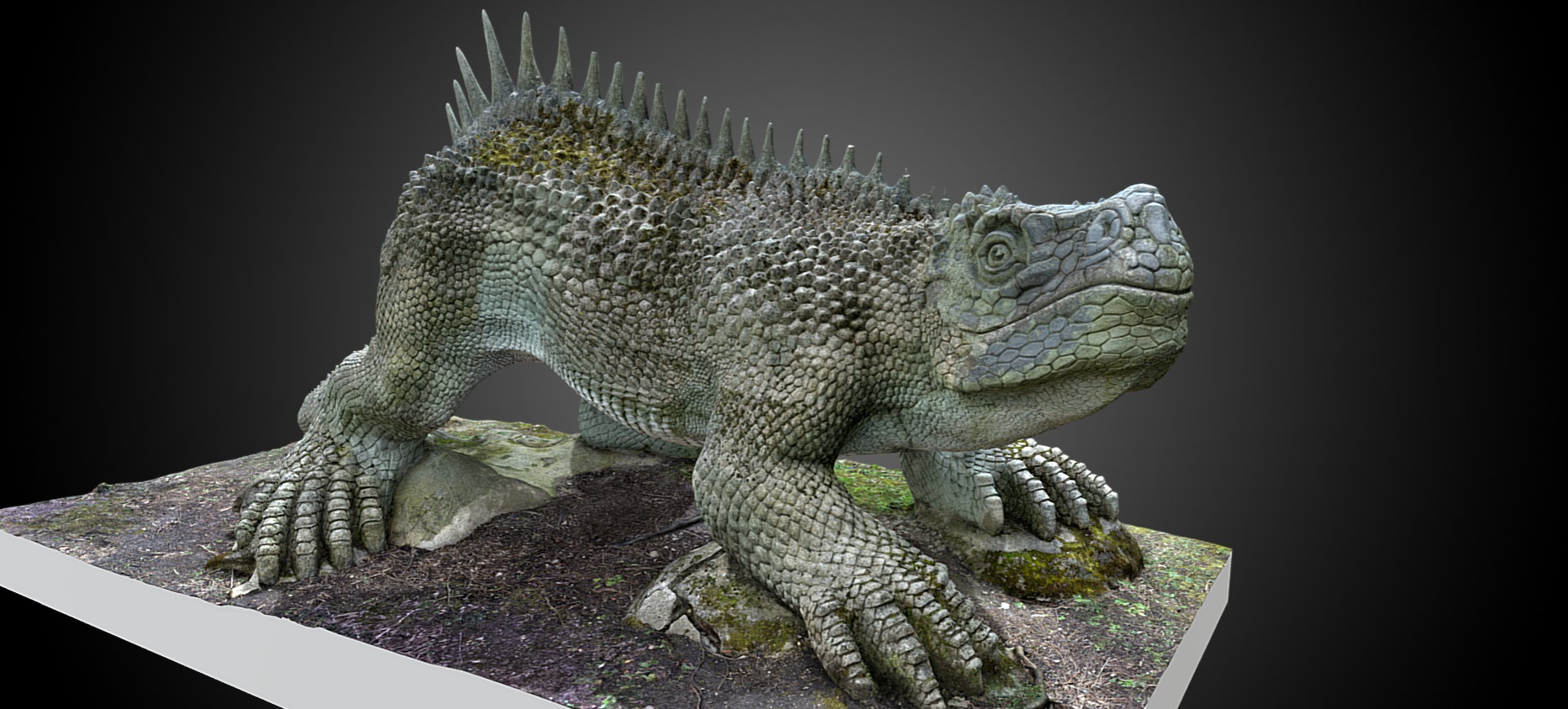3D Models of the Crystal Palace Dinosaurs Launched
New interactive models of the 29 surviving Victorian sculptures in Crystal Palace Park, South London have been created by Historic England, in collaboration with the Friends of Crystal Palace Dinosaurs.
The dimensionally accurate photogrammetric models have been created from multiple digital scans of the famous Grade I listed beasts.
People can now get up close and personal with the Dinosaurs without disrupting the vulnerable animal artworks or their setting on 'Dino Island'
The models also allow conservators to benchmark the condition of the fragile creatures, decide where repairs are most needed, and help shape plans for their maintenance into the future.
The scanning and subsequent modelling was undertaken by Historic England’s Geospatial Survey Team, in collaboration with the Friends of Crystal Palace Dinosaurs.
Why are the Crystal Palace Dinosaurs so important?
The Dinosaurs were created between 1853 and 1855 by artist Benjamin Waterhouse Hawkins as part of the original design of Crystal Palace Park. The Park was laid out to plans by Joseph Paxton.
The sculptures are the world’s first attempt to model extinct animals at life-size, using fossil remains as evidence. This was before the publication of Darwin’s 'Origin of Species' and the word 'dinosaur' had only been coined a decade earlier, in 1842.
They are one of the earliest examples of 'edu-tainment', providing a free, entertaining yet educational attraction for the public. The Dinosaurs represented the cutting edge of the Victorian understanding of the prehistoric world.
Contrary to popular belief, only four of the sculpted animals are technically dinosaurs by definition.
The collection includes ancient mammals and amphibians that are also now extinct, plus marine and flying reptiles.
While modern understanding of the pre-historic world has advanced since Benjamin Waterhouse Hawkins’ day, the Crystal Palace Dinosaurs represent an important moment in the history of science and their significance is recognised by the highest level of listing, Grade I.
Looking ahead
The future is looking bright for the Crystal Palace Dinosaurs and the wider historic Park. In March 2023, the National Lottery Heritage Fund confirmed a grant to advance the Park’s regeneration plans, including the restoration of the Tidal Lakes area, home of the Crystal Palace Dinosaurs.
This essential funding builds on the successful partnership work of Bromley Council, Historic England, the Crystal Palace Park Trust and Friends groups, who are all actively engaged in revitalising the Grade II* registered Park for the benefit of the public.
Historic England is a long-time supporter and champion of the Park and its rich heritage. Through funding and specialist advice, we are working closely with partners on the current transformation of the Grade II* listed Crystal Palace Subway into a new public space.
Join us: Sunday 17 September 2023
Historic England will be part of the Crystal Palace Park Trust Garden Party on Sunday 17 September.
How to Build a Dinosaur!
Time: 10am to 6pm
Location: The Concert Bowl, Crystal Palace Park
Get up close and personal with the Crystal Palace Dinosaurs via our new 3D models.
See and feel fragments from some of the original Dinosaurs statues and later replacements, showing just how they were made. Explore how the original Dinosaurs and modern reconstructions were made and the innovations used in both time periods.
Weather permitting, see the recreation of a 19th-century photograph of the Dinosaurs using the same calotype method as was used back in 1855.
Take home an origami sheet so you can make your very own dinosaur!





